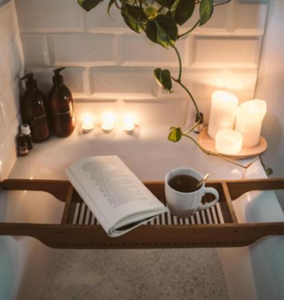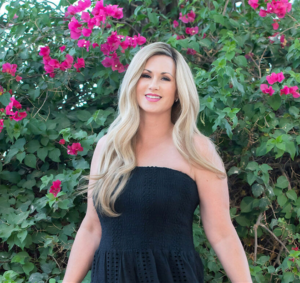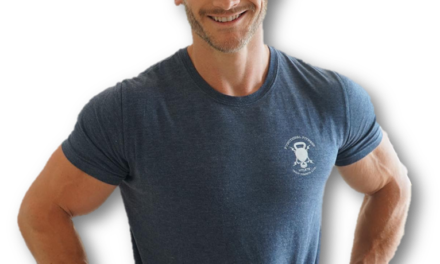Looking for some powerful anxiety coping mechanisms? Here’s a list of the ones I love, plus the system I use to stop anxiety at the root.
As a personal and professional development coach, I work with a lot of high-achieving and accomplished women – the kind of women who go after big goals and wildest dreams.
Inevitably, they’re also dealing with some stress and anxiety, too, as they overcome blocks and fears to go after their most ideal life.
And that’s exactly what I help them navigate through.
But anxiety isn’t the same for everyone. Sometimes anxiety is situational, and other times it can be caused by a chemical imbalance or a more pervasive anxiety disorder.
My best tips and advice can help support anyone who’s experiencing anxiety, but if you’re working with a more serious imbalance or disorder, then I recommend additional support, such as a therapist, counselor or medical professional.
What I help people with is the kind of anxiety that comes into everyone’s life – the stress that comes with external situations, events and triggers.
Over the years, I’ve learned … it’s best to have a plan.
Create An Anxiety Action Plan
In my coaching programs, this is one of the first things I do with clients who are experiencing anxiety – and it works! In fact, my clients love this simple yet practical approach that stops anxiety in its tracks.
Since it’s a personalized approach to your anxiety triggers, it’s a good idea to revisit this plan often, and make adjustments or add new strategies whenever you need to. After all, you’re changing and evolving all the time, and so should your approach to anxiety.
That’s what I love about this practice. It provides a framework, instead of a one-size-fits-all solution. It gives you the flexibility you need to find relief from any situation or trigger.
But, as with any tool, you have to actually work it.
1. Acknowledge It
The first step to managing an anxious moment is to acknowledge it. In fact, you’d be surprised how much relief you can feel instantly by giving it voice and space to breathe.
So just say it: This situation is not ideal. It’s causing me stress. I’m scared of a potential negative outcome that’s looming in the distance.
Next, try to acknowledge the trigger or source of the anxiety. What caused a disruption to your inner peace? Did an event or person bring up trauma from the past? Is there something you’re afraid of?
Often, when we’re stressed or anxious, that means we’re also seeing things from a place of emotion, and our judgment may even be clouded. It’s like having blinders on, and you just cannot see a new perspective on your situation.
In these moments, my clients find the support of a coach to be incredibly helpful. Sometimes we need a partner to support us as we identify the anxieties we feel inside – and the triggers that come from outside.
2. Explore It
The next step in combating anxiety is the willingness to explore it. In my experience, the most effective way to do that is by asking the right questions.
Reflective inquiry is a process that allows you to look at things differently, with a fresh perspective. It prompts you to let go of the emotions and thinking patterns that keep you stuck. Often we think it’s an external problem that’s disrupting our inner peace, when it’s really a signal to look inward for the answers and resources that will help us recalibrate back to peace.
This is where a skilled coach can help you explore deeper and become your thinking partner, someone who can hold space while guiding you toward your own inner resources. Someone who can disrupt the old patterns and behaviors that are preventing you from moving forward.
Reflective inquiry is not only an incredible tool to find your right answers, but it’s also my specialty as a coach. I see the transformation it sparks, and I encourage you to reach out if you need support!
3. Take Responsibility For It
Once you have a clear understanding of your triggers and their root causes, it’s time to take action and address it. I think this is where we tend to overcomplicate things. We feel like it has to be complex, but this step is actually quite simple.
You have to make the conscious choice to change, to do something differently, to use a tool, to practice a new stress-reduction technique – anything that allows you to create a new and different outcome.
But you actually have to do it.
And don’t forget that the right tool might be different depending on the situation or trigger. So try to be flexible. You don’t have to be rigid in your response to stress. Try simply being curious, and see what next step feels good.
Remember, taking action to quiet the anxiety in your mind is an act that strengthens your resilience and helps you build that muscle for the future, too. It gets easier the more you practice it.
4. Workshop It
Taking action to address your anxiety at the root will most likely make you feel much better. Regardless of how effective your strategies are, however, don’t skip this crucial final step – because this is where the deeper learning truly lies.
You see, when I work with my clients, this is where we create a plan to cope with future anxious situations just like this one. As you learn what works and what doesn’t, you apply that experience by creating a plan for the future.
For example, if you’re anxious about another confrontation with a coworker who constantly presses your buttons, then you might make a plan to excuse yourself from the situation as soon as you start to feel your heart rate quicken or your chest heat up. Take action by practicing 15 minutes of breathwork in a private space, before responding to your coworker. With this plan in place, you know exactly what the trigger looks like, how you’re supposed to respond, and what action to take once you feel better.
When you can make a plan and carry it out, then you can also look back and reflect on how effective (or not) it was, which strengthens your resolve in the process and your confidence in the future. It’s a personalized plan to your specific triggers that only gets more effective over time.
If you really want to see quick and transformative results, a coach can help with this process by identifying blind spots, suggesting additional solutions, and holding you accountable to the process.

Anxiety Coping Mechanisms & Tools
I believe the process above is the best way to address anxiety at the root cause and see positive results across the board. But I also wanted to provide some tools that can help in the moment – different practices, tools and techniques you can add into your personalized anxiety plan, depending on what works best for you.
So let’s dive into some of my favorite anxiety coping mechanisms.
Basic Self-Care
First and foremost, you should consider your health if you’re dealing with consistent anxiety flare-ups and stress. Maintaining a healthy mind, body and soul will help bring down your baseline stress levels and make you feel stronger and better able to deal with stress when it comes.
If you’re experiencing anxiety, take a look at these basic health indicators:
- Exercise – Physically move your body to shake off an anxious mood, and start producing happy hormones and chemicals in the body.
- Nutrition – Nourishing your body from the inside out will help your natural healing systems kick into gear. Likewise, limit anxiety-inducing food and drinks, such as caffeine and sugar.
Sleep – When you’re drained and exhausted, you don’t have the energy to put your tools to work, and you’re more likely to succumb to emotion. Prioritize sleep if you want to put your best foot forward.
Physical Tools
Once you’ve made health a priority, you might want some physical tools to bring down your daily anxiety levels. Sometimes a tangible tool that you can hold in your hand will help ground you, especially if you’re a high-energy person with a fast mind.
Here are a few tools my clients and I enjoy:
- Fidget spinners
- Fidget rings and jewelry
- Pop it blocks
- Stress balls
- Weighted blankets

Stress Reduction Techniques
When anxiety is at its worst, rely on these stress reduction techniques to help you gain control of your nervous system and stop fear from taking over. These anxiety coping mechanisms are great tools to use when stress starts feeling more like panic.
- Breathwork –There are a lot of variations on breathing techniques, and I think it’s best to find a style that works for you. But when in doubt, take 3-5 slow deep breaths for instant relief.
- Sensory Techniques –When the brain is busy fixating on a stressful situation, it helps to distract it. You can do that by engaging your senses with the 3-3-3 rule. Simply name three things you can see, three things you can smell, and move three different body parts. This brings you back to your senses when you can’t get control of racing thoughts.
- Journaling –When you’re not sure what’s going on, but you just know you don’t feel right, then I recommend journaling. The page will always reveal what the mind is trying to hide.
- Meditation –This is another great tool for when you feel lost, overwhelmed or like you’re losing control. Find a quiet, private space where you can sit, and feel the weight of your body sinking into the ground. Breath deeply and try to clear your head. Chances are the answers will pop into your mind as soon as you give it a moment of peace.
- Temperature –When you change your body temperature, you’re engaging your senses again and bringing attention back to the physical body. I suggest a warm bath because the water is soothing, and you can add some calming essential oils like lavender or rose.
Social Support – Sometimes it seems like none of the typical tools are working on their own. That’s when I like to phone a friend. Call someone you can trust to help you shake things off, see a different perspective and feel supported from the outside in.
The Bottom Line
There’s no quick fix for any of this. Practice makes progress. The more intention and awareness you build into your anxiety responses, the better results you’ll see. And as you strengthen these muscles, it will get easier and easier to reach for your tools, even in the toughest of moments. That’s how you teach yourself to work through difficult things, overcome struggle, and rise in the face of challenges.
I don’t think any one of us will ever reach a point where we never feel anxiety again, but there is hope – and there is help.
It’s my hope that these anxiety coping mechanisms are a starting point.
Ready For More Support?
If you keep hitting the same walls without success, then it might help to have support from someone who’s been there. Sometimes all it takes is the accountability, encouragement, and support of another person who understands what you’re going through – and everything changes.
If you feel like you need the support of a friend, coach, or community, then please know that I’m always here for you. And if you like these anxiety coping mechanisms, you can learn more about my programs and community, or reach out just to talk.
I don’t think any of us transforms our thinking and behaviors on our own. We learn from others, lean on others, and find motivation in bettering ourselves for the people we love.
Plus, we see progress so much more quickly and efficiently when someone else is invested in our progress, too.
Instead of taking one step forward and two sweets back, let’s just take one step at a time – in the right direction.

Melissa Hull is E360tv’s Creative Content Producer, inspirational speaker, author, entrepreneur, business strategist consultant, and award-winning artist. She has shared the stage with Mitch Carson, Bill Walsh, James Dentley, Kevin Harrington, Joel Bauer, Forbes Riley and several other notable speakers. She is the author of “Lessons From Neverland” and is regularly sought out as a business consultant and mentor to several small businesses.




